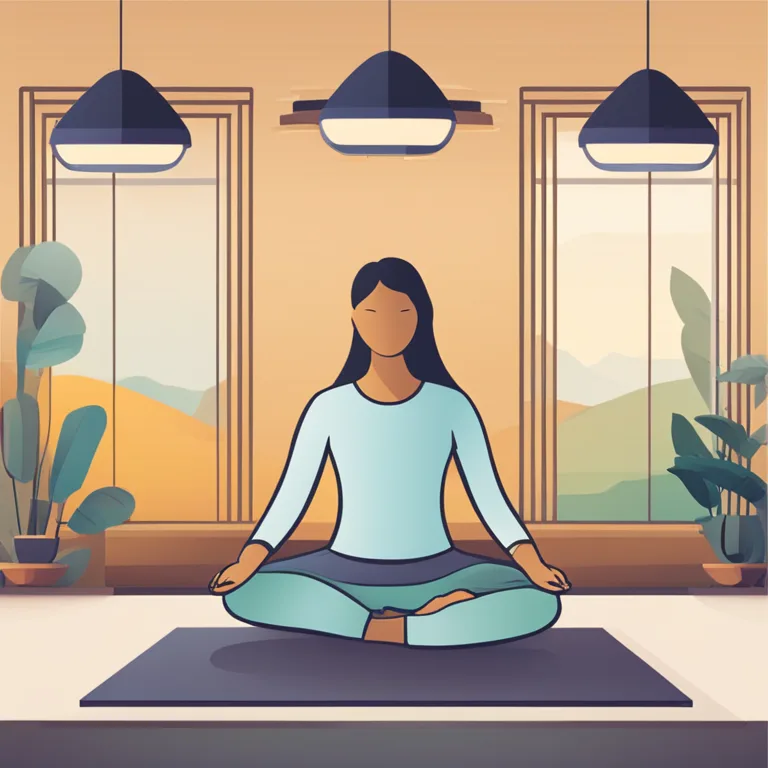
Mindful Calm: Meditation for Everyday Wellness
Discover effective meditation techniques for enhancing your wellbeing, promoting relaxation, and finding inner peace in your daily life.
article by Hina Kurosawa
Introduction to Meditation
Meditation has stood the test of time as a powerful tool for enhancing wellbeing. As we navigate the complexities of life in 2024, finding tranquility through meditation is more relevant than ever. This practice not only promotes relaxation and reduces stress but also aids in achieving a deep sense of inner peace. Despite the fast-paced world we live in, incorporating meditation into our daily routine can be surprisingly simple, bringing profound benefits to our mental, emotional, and physical health.

Creating Your Space
The journey to meditation begins with creating a supportive environment. Select a quiet, comfortable spot where you can sit undisturbed. This could be a dedicated meditation corner adorned with calming elements such as plants, cushions, or soft lighting. Establishing a routine time for practice can significantly enhance your meditative experience. Just a few minutes daily, perhaps at sunrise or before bedtime, can set the tone for tranquil reflection.

Focus on Breathwork
Breath is the cornerstone of meditation. An effective technique to start with is deep diaphragmatic breathing—slow, mindful inhalation through the nose, allowing the belly to rise, and a gradual exhalation through the mouth. As thoughts intrude, gently guide your focus back to your breathing. Over time, this practice cultivates focus and stills the mind, serving as a gateway to more profound meditative states.

Mindfulness Meditation
Mindfulness meditation encourages present-moment awareness. Begin by observing your breath, body sensations, thoughts, and emotions without judgment. Mindfulness apps and virtual workshops are widely available in 2024 to guide you through this process. Regular mindfulness practice has been linked to reductions in stress and anxiety, improved attention, and enhanced overall wellbeing.

Body Scan for Relaxation
The body scan is a technique that promotes relaxation and bodily awareness. Lie down, close your eyes, and slowly focus your attention on different parts of the body, starting from the toes and moving upwards. With each breath, release any tension you notice. Regular body scans can help with stress management and encourage a more compassionate relationship with oneself.
Mantra and Affirmation
Repeating mantras or affirmations during meditation can have profound effects. Choose a phrase that resonates with your intentions, such as "I am at peace" or "I am strong." As you repeat these words silently, they can help center your thoughts and deepen your meditative practice. Modern technology offers mantra and affirmation generators, which can provide personalized suggestions based on your wellbeing goals.
Walking Meditation
Not all meditation requires sitting still. Walking meditation is a form of moving meditation ideal for those who find peace in gentle motion. As you walk slowly and deliberately, focus on the sensations of your feet touching the ground, your breath, and the environment around you. This can be a particularly helpful practice for integrating meditation into a busy lifestyle.
Yoga Nidra for Deep Rest
Yoga Nidra, or "yogic sleep," is a meditation practice that aims to induce a state of deep relaxation while maintaining consciousness. Audio-guided Yoga Nidra sessions have become widely accessible, guiding practitioners through a systematic sequence that relaxes the body and mind. This practice can be especially beneficial for those struggling with insomnia or seeking profound rest.
Published: 1/8/2024
Modified: 1/8/2024
More predictions
Come back here soon to learn more about yourself and your future


Mastering Japa Meditation Practices
Discover the serene art of Japa Meditation and elevate your spiritual journey through chanting and mindfulness.


Meditation Techniques For OCD
Mindful practices to help manage Obsessive-Compulsive Disorder symptoms effectively through meditation.


Meditation Techniques to Soothe OCD
Discover meditation practices designed to help manage OCD symptoms through mindful awareness and relaxation.